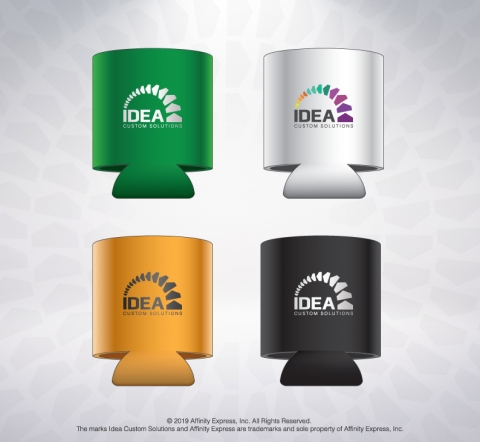In 2013, researchers at the University of Washington set out to accomplish a very scientific task: to see if can koozies really do keep our drinks cold. The project, which was eventually funded by the National Science Foundation and the National Center for Atmospheric Research, proved what canned beverage lovers knew all along. We were absolutely right. It does keep canned drinks cold, mostly because the material in the koozie stops condensation forming on the outside of the can, preventing drinks from sweating away their chill.

Here at Idea Custom Solutions, we bet the original creators of the can koozie would be thrilled to know that information, that is, if anyone knew for sure exactly who invented it or even who owns the patent today. The birth of the koozie is oddly murky and that intrigue continues to this day.
Depending on whom you ask, can koozies were invented in Australia, evolved from English traditions, were created by a corporation or were fabricated by a woman in Idaho. In Australia, koozies were supposedly introduced in the 1970s and became immediately popular among surfers, who called them “stubby holders.” “Stubby,” of course, means a beer bottle in Australian slang — thus the origin of the product name. But those who claim koozies are a British custom can also say the product evolved from a specific name, particularly the 100-plus-years-old “cosy” or “cozy,” which are knitted or fabric covers for a teapot that keeps the water hot. Cosy evolved into koozie; becoming a product to keep the chill in rather than out.
In the 1980s, things got both more official and a bit more confusing. The Radio Cap Corporation (RCC, now Norwood) trademarked the name “koozie” in 1980, but just the name. The next year, Idahoan Bonnie McGough filed a patent for a 12-ounce beverage cozy, a two-walled drink holder filled with goose down insulation (suggested by McGough) and an elastic band at the top to keep it snug on the drink. Meanwhile, RCC was already mass-producing its own version, which was clunky, rigid and chock full of advertising space. Other companies quickly began production of the drink holders. The can koozie as we know it today emerged in the 1990s, when manufacturers switched to more forgiving neoprene and foam materials, with an equally imprintable surface.
All that said, we still don’t know exactly who invented the holders and who owns the trademark today. RCC let their trademark on the name lapse in 2001 and, since then, there’s been a continuous battle between RCC and company Kustom Koozies over how exactly the name should be used. And BIC makes it even more complicated; the company owns the trademark for “koozie” as well — just the all-caps version.
Regardless of who owns what part of the can koozie, they’re still excellent promotional marketing opportunities. Count on Idea Custom Solutions for the vector artwork and other graphic services you need to decorate custom koozies for your clients and their campaigns.

Add new comment